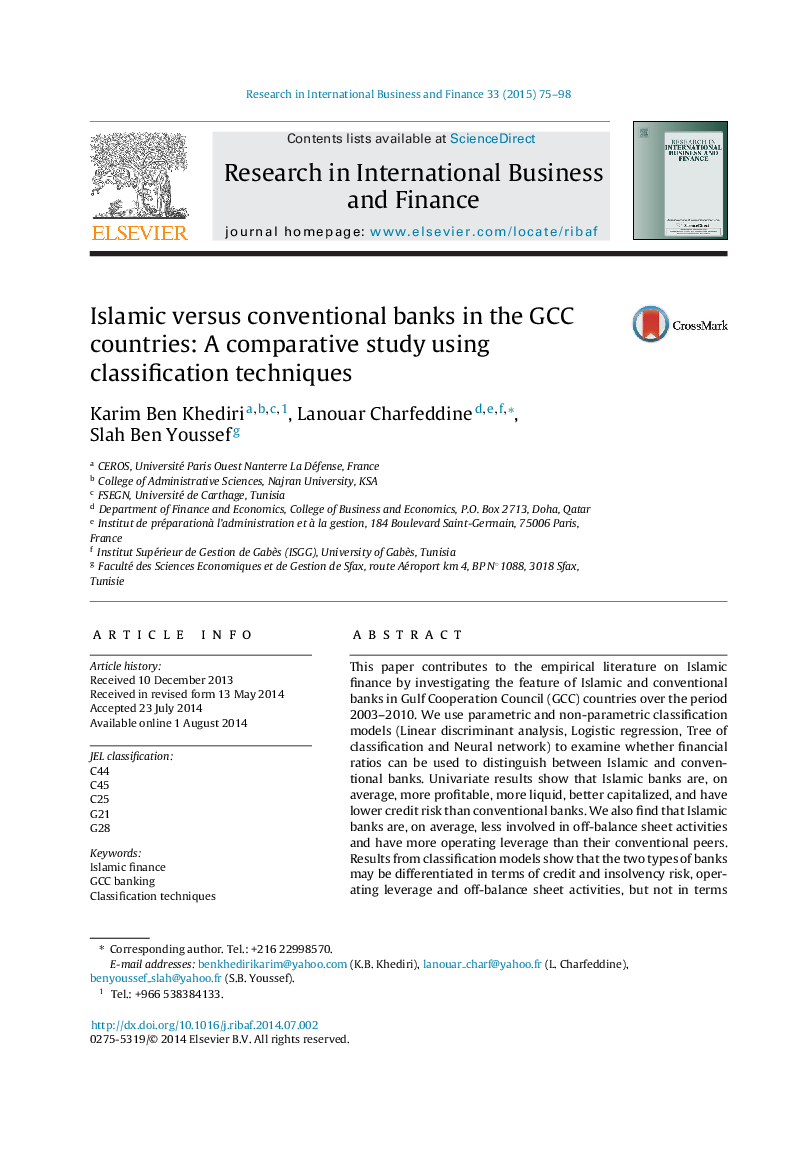| Article ID | Journal | Published Year | Pages | File Type |
|---|---|---|---|---|
| 1003551 | Research in International Business and Finance | 2015 | 24 Pages |
•We investigate whether Islamic and conventional banks in the GCC countries behave differently.•We use 14 financial ratios for 61 Islamic and conventional banks over the period 2003–2010.•We perform a comparison between the two types of banks using some classification techniques.•We find that banks may be differentiated in terms of credit and insolvency risk, operating leverage and off-balance sheet activities, but not in terms of profitability and liquidity.•We find that the financial crisis has a negative impact on the profitability for both Islamic and conventional banks, but time shifted.
This paper contributes to the empirical literature on Islamic finance by investigating the feature of Islamic and conventional banks in Gulf Cooperation Council (GCC) countries over the period 2003–2010. We use parametric and non-parametric classification models (Linear discriminant analysis, Logistic regression, Tree of classification and Neural network) to examine whether financial ratios can be used to distinguish between Islamic and conventional banks. Univariate results show that Islamic banks are, on average, more profitable, more liquid, better capitalized, and have lower credit risk than conventional banks. We also find that Islamic banks are, on average, less involved in off-balance sheet activities and have more operating leverage than their conventional peers. Results from classification models show that the two types of banks may be differentiated in terms of credit and insolvency risk, operating leverage and off-balance sheet activities, but not in terms of profitability and liquidity. More interestingly, we find that the recent global financial crisis has a negative impact on the profitability for both Islamic and conventional banks, but time shifted. Finally, results show that Logit regression obtained slightly higher classification accuracies than other models.
Graphical abstractFigure optionsDownload full-size imageDownload as PowerPoint slide
